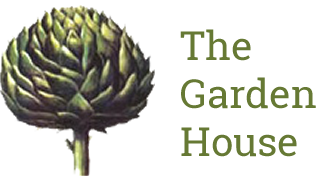Plant of the month: Malus
Posted:19 November 2010
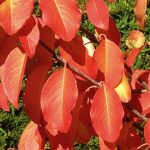 As the autumn draws in, fruits and seeds ripen creating an exciting range of colours and shapes in the garden.
As the autumn draws in, fruits and seeds ripen creating an exciting range of colours and shapes in the garden.
A great tree for the smaller garden is the Malus or crab apple with its fantastic fruits and autumn colour. One of Bridgette’s favourites is Malus x zumi ‘Golden Hornet’ which bears huge crops of bright yellow fruits that last on the tree well into autumn and winter.
- Common name: Crab apple
- Family: Rosaceae
- Height & spread: 10m (30ft) high by 8m (25ft) wide
- Form: Deciduous tree
- Soil: Well-drained, neutral to alkaline soil
- Aspect: Full sun or semi-shade
- Hardiness: Fully hardy
The name Malus is from the Greek for melon, and a name applied to several trees with fleshy exterior fruits. This genus contains about 35 species of deciduous trees and shrubs, found in woodlands and thickets throughout northern temperate regions.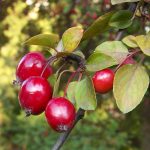
Malus are easily grown, small- to medium-sized trees flowering from April to May. They produce fragrant flowers 2-5cm (1-2in) across, usually shallowly cup-shaped, singly or in umbel-like corymbs.
Edible fruits follow the flowers. Although some fruits do need cooking to be palatable, the fruit flavour improving considerably if the fruit is not harvested until it has been frosted. The fruit is quite variable in size (2-4cm diameter) and quality. While usually harsh and acidic, some cultivars are quite sweet and can be eaten raw. The fruit is rich in pectin and can be used to help other fruits to set when making jam. Pectin is also said to protect the body against radiation.
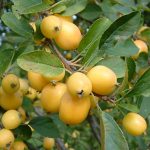 Bridgette’s favourite Malus x zumi Golden Hornet:
Bridgette’s favourite Malus x zumi Golden Hornet:
It is a broadly pyramidal, deciduous tree bearing a profusion of large, cup-shaped pink-flushed white flowers opening from deep pink buds in late spring. Small, yellow crab apples follow, and persist well into winter. The display of golden fruit is further enhanced when the dark foliage turns yellow in autumn.
Grow in moderately fertile moist but well-drained soil in full sun, although partial shade is tolerated. Minimal pruning is needed in late winter or early spring, when the tree is dormant. Remove damaged, wayward or crossing shoots.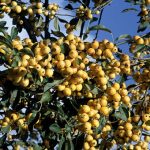
Problem pests can include aphids, red spider mites, caterpillars, apple scab, honey fungus, canker, fireblight and mildew.
To propagate, bud in late summer or graft in midwinter
Awarded an Award of Garden Merit (AGM) by the RHS Woody Plant Committee who described it as: “Small deciduous tree with a broad ovoid crown and white flowers followed by a profuse crop of bright, deep yellow fruits 2.5cm long, which persist well into winter”.
